Data Assimilation
By the data assimilation method that combines the numerical modeling using the deductive method and the advantage of the observation data analysis using the inductive method, we are doing the research, such as sea condition forecast and re-analysis and optimization. In other words, we can say that the data assimilation is the discipline overall including the control theory and statistical science not only physical oceanography. We have built a sea condition forecasting system actually not only learn the basic theory, and demonstrated to the public on the website. Further, cean data assimilation holds promise a wide range of availability that can be used for research and business of Japan Coast Guard and Fisheries Research Institute (ex. Japan Sea National Fisheries Research Institute JADE prediction system).
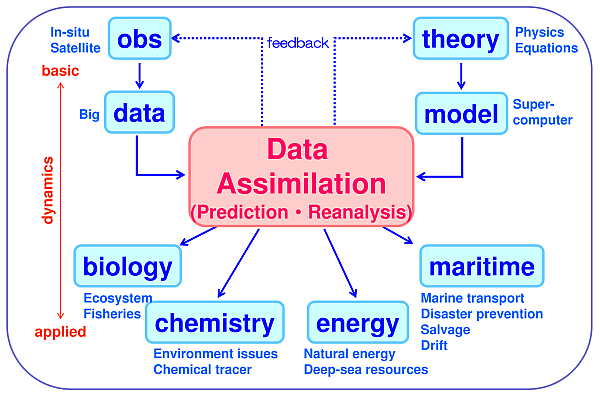
RIAM Ocean Model
This is an original 3D ocean circulation model that developed in our laboratory. The wide range of ocean variations from global to coastal scales can be accurately simulated by this numerical model. For instance, the ocean hindcast and forecast around Japanese archipelago (DREAMS) is based on this model. Absolute velocity from the ocean models of different grid resolution is shown on the following map of Genkai-Nada.
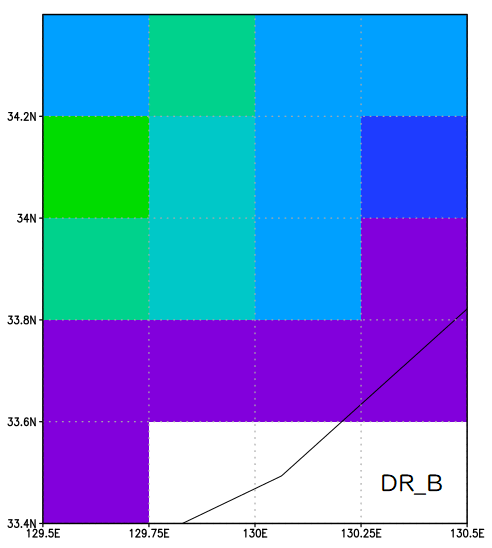
Ecosystem model
We are developing and improving the ecosystem model to predict the variation of phytoplankton that composing the base of the marine ecological pyramid (Fig.1).
By coupling to the ocean general circulation model with the ecosystem model, we investigate the response of marine ecosystem to the global warming prediction (Fig.2), and employ as the tool of environmental management to the biodiversity .
High-resolution model has been set up to estimate the ocean current energy potential and the ocean thermal energy conversion, contributing to in-situ experiments. Various Ocean fluctuations in East Asia are concentrated on the strait connecting the East China Sea and Japan Sea.Thanks to the full cooperation of the Ferry company (Camellia Line Co., Ltd.), we are continuing the record long-term monitoring exceeds 15 years in the Tsushima straits. Members of this laboratory experience the ocean observation back and forth the Tsushima Straits many times.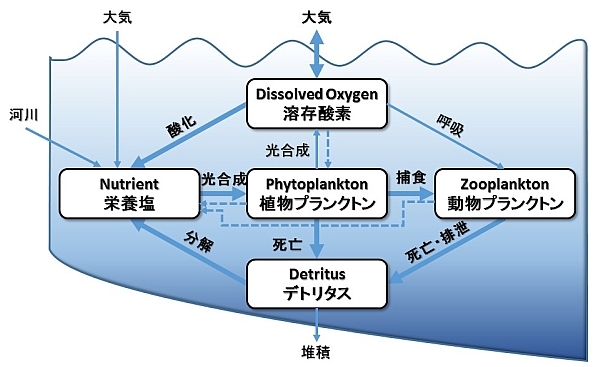
Figure 1: schematic view of the NPZD + DO type ecosystem model.
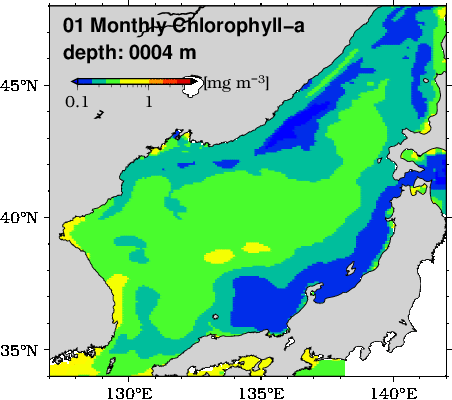
Figure 2: Seasonal variation of the chlorophyll-a (phytoplankton) concentration estimated by the ecosystem model.Investigation of the ocean energy potential
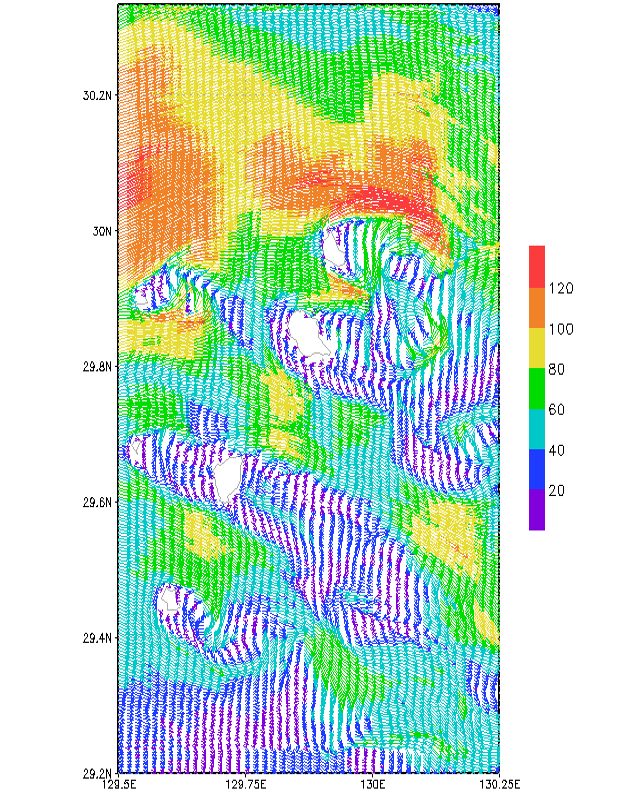
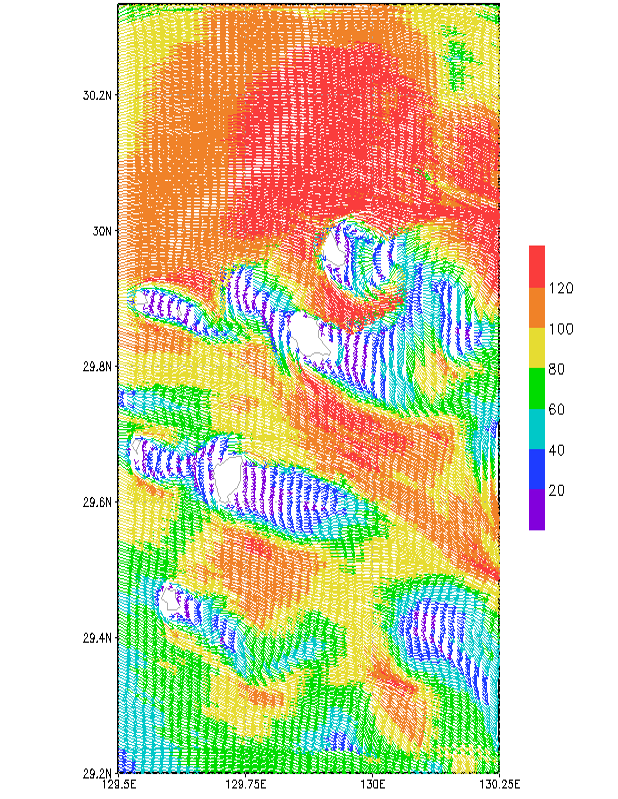
High-resolution numerical model has reproduced the variation of Kuroshio in the Tokara Strait successfully.
It suggests that the short-term (high frequency) variation of Kuroshio is quite strong due to the interaction with tidal current.Monitoring of the Tsushima Warm Current
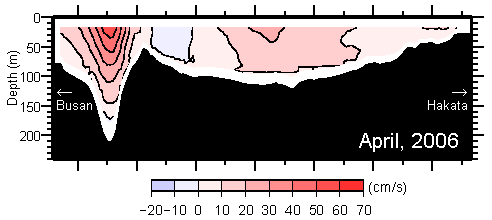
Passing flow velocity structure of the Tsushima Straits in April 2006 that was observed in the ADCP installed at the regular ferry.
Tsushima warm current branches to east-west channel and counter current can be seen in the intermediate (Tsushima downstream).